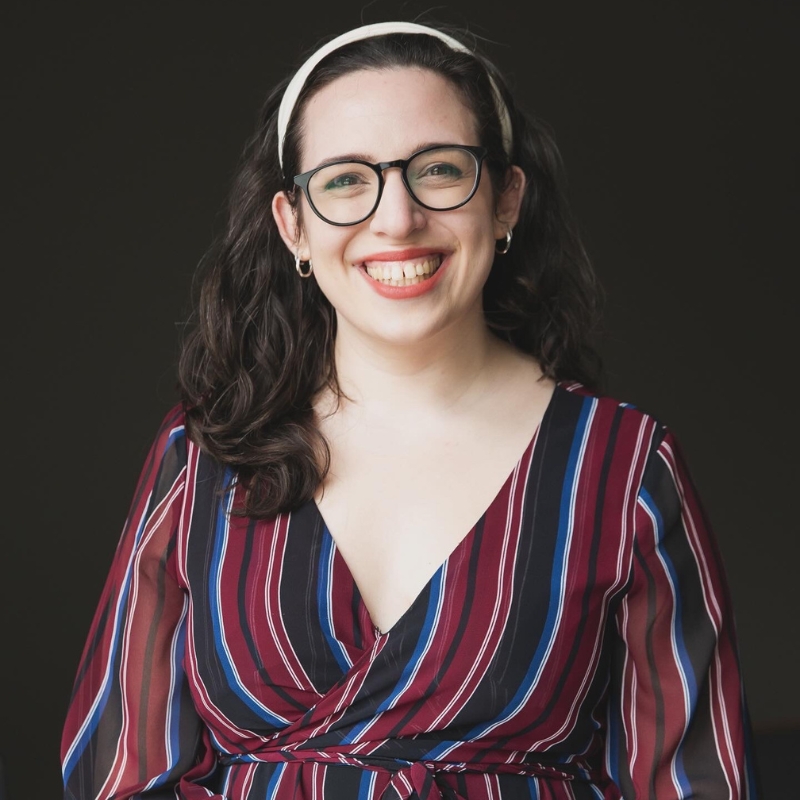I have been reflecting on the confluence of the secular and Jewish calendars — how June 1 simultaneously marks the beginning of Pride Month and the festival of Shavuot. I imagine many different types of people gathering, finding community, and staying up until sunrise in both queer clubs and batei midrash (with the elite few who will navigate both in the same evening).
As a millennial-Gen Z cusp, queer rabbi, this intersection feels not only significant, but deeply resonant. I also recognize that we live in a time where queer folks, particularly our trans and gender-expansive siblings, are facing disgusting levels of discrimination and violence, in the streets and legislatures alike. I cannot convince the misguided and the bigots that their hate is directly in contradiction to the heart of Torah, which Hillel generously reminds us: “That which is hateful to you do not do unto your fellow.” (Shabbat 31a) Despite this, in the spirit of Shavuot and Pride alike, I want to lift up some themes that will be guiding me through this dual festival season.
Find more resources for Shavuot
Every Jewish holiday that we celebrate is a reenactment of its first occurrence. Even if we haven’t learned that explicitly, we experience it when we recall the seventh day of Creation on Erev Shabbat, when we sit at the seder and say each Jew should see themselves as if they left Egypt. So too with Shavuot. We are not only celebrating the receiving of the Torah and the revelation at Sinai, but we undergo our own journey of revelation. In his commentary on Parshat Yitro, the Me’or Enayim asks, “How do we receive the Torah every Shavuot? Hasn’t it already been given?” He immediately brings a resolution from the Sages, “Every day, you will have new eyes, like the day of Matan Torah, like the day we received the Torah. It is that which you need to receive for yourself every Shavuot.”
So much of the fear of queer identity is that it is unrecognizable, that it hasn’t been seen or done before and therefore, must be perverse. While there are countless historical examples around the world of queer expression, I also feel bold enough to ask, so what if something is new? So what if we are describing human experience with new vocabulary and mapping it along new axes and paradigms? Every day, we are given new eyes to gaze at the world with, and we thank our Creator for giving us the discernment to encounter that world as it is and how we might like it to be.
It is my hope that these new eyes also allow us to see ourselves anew. Identity, be it sexuality, gender, vocation, or spiritual, is not static. Baruch Hashem (thank God)! If we are instructed to receive Torah in new ways, let us also reveal the text of who we are in any given moment. Perhaps this self-interrogation is even scarier than re-understanding the world around us, but Matan Torah was also filled with trembling, terror, and doubt.
The comforting thing amongst this newness is that we don’t have to have it all figured out amidst the process of revelation. Many scholars have noticed the order of B’nei Yisrael’s response to Moses after he presented them with the Torah: “na’aseh v’nishma” (we will do and we will obey/understand). (Exodus 24:7) The order has been interpreted to have great significance: We can start the process of fulfilling mitzvot before we have fully understood or grasped their meaning. The Me’or Enayim applies this principle to how we re-engage in revelation each Shavuot: “Each and every day, one puts na’aseh (we will do) before nishma (we will understand), this is the essence of receiving the Torah.”
Find more commentaries on LGBTQ rights.
We can start the process of being our authentic selves and accepting others as they want to be seen before we fully understand what or why that might be. I think of all of the amazing family members and caregivers who have embraced their queer and trans kin before they understood the definitions of particular identity labels, because they knew that their job was to do the act of love. I also think about all of the queer Gen Z and Alpha kids who unapologetically shout to the world, “I’m going to do me, I’m going to date who I want, dress how I want, and I’m not going to label or explain it because I’m constantly becoming and learning who I am along the way.” That is the essence of na’aseh v’nishma.
Revelation is joyful and scary. It is constant and has been happening for millennia. It is newness, individually and communally. May this season of Pride and Shavuot grant us the audacity to live into the expansive gifts of that revelation. May we love ourselves and others fiercely, even before we have a chance to fully grasp who we are. And may God’s keshet (rainbow), the reminder of preserving humanity, remind us just how precious every queer life is.
Rav Michaela Brown (she/her) is a rabbi, college chaplain, and Jewish educator at Carleton College and St. Olaf College in Northfield, MN. She is passionate about how all Jews have equal ownership of Torah and how they can ground themselves in Jewish tradition as they encounter the modern world. She is a proud Hebrew College rabbi, receiving smicha in 2024, and unapologetically identifies as a post-denominational Jew.

